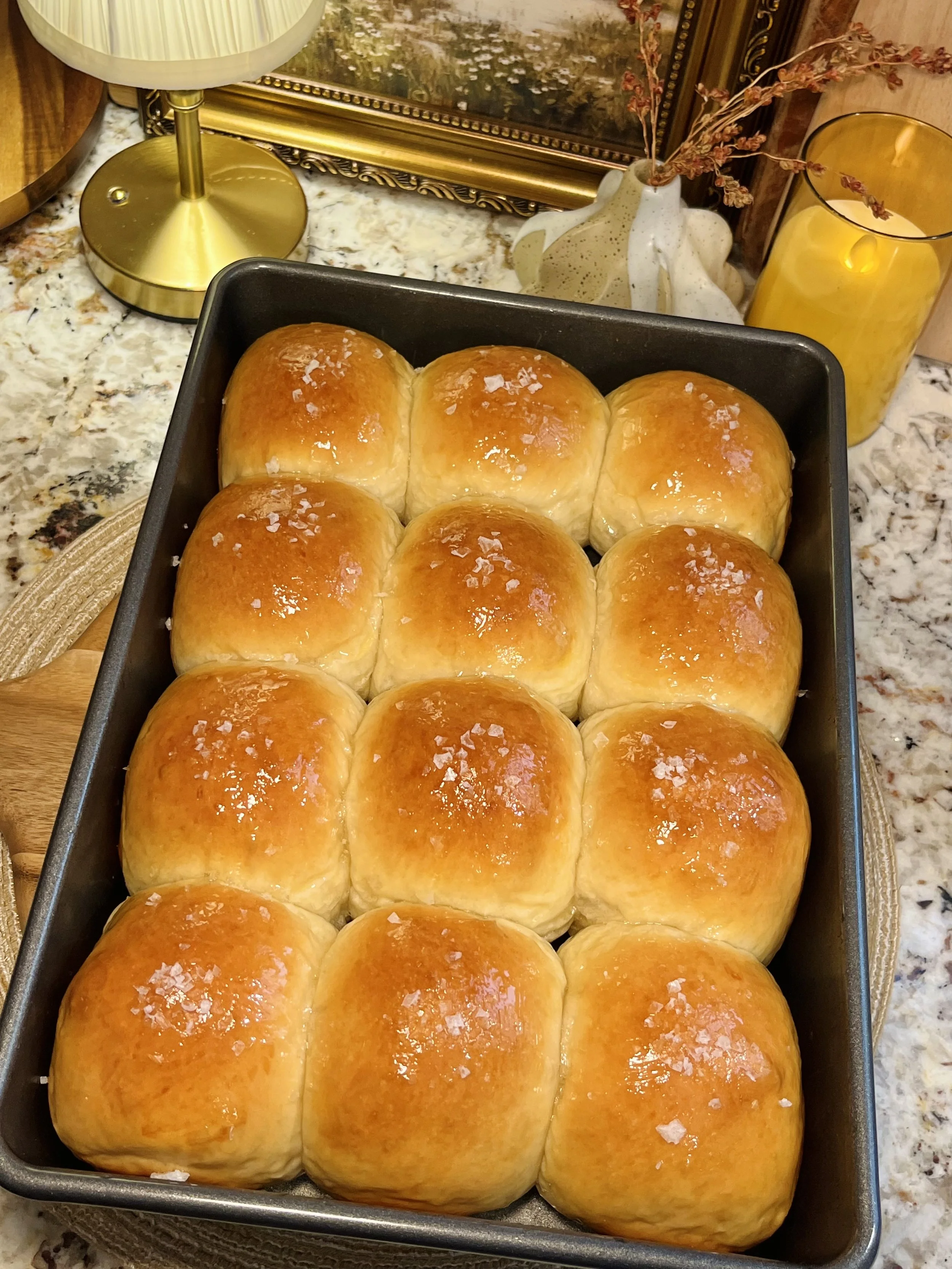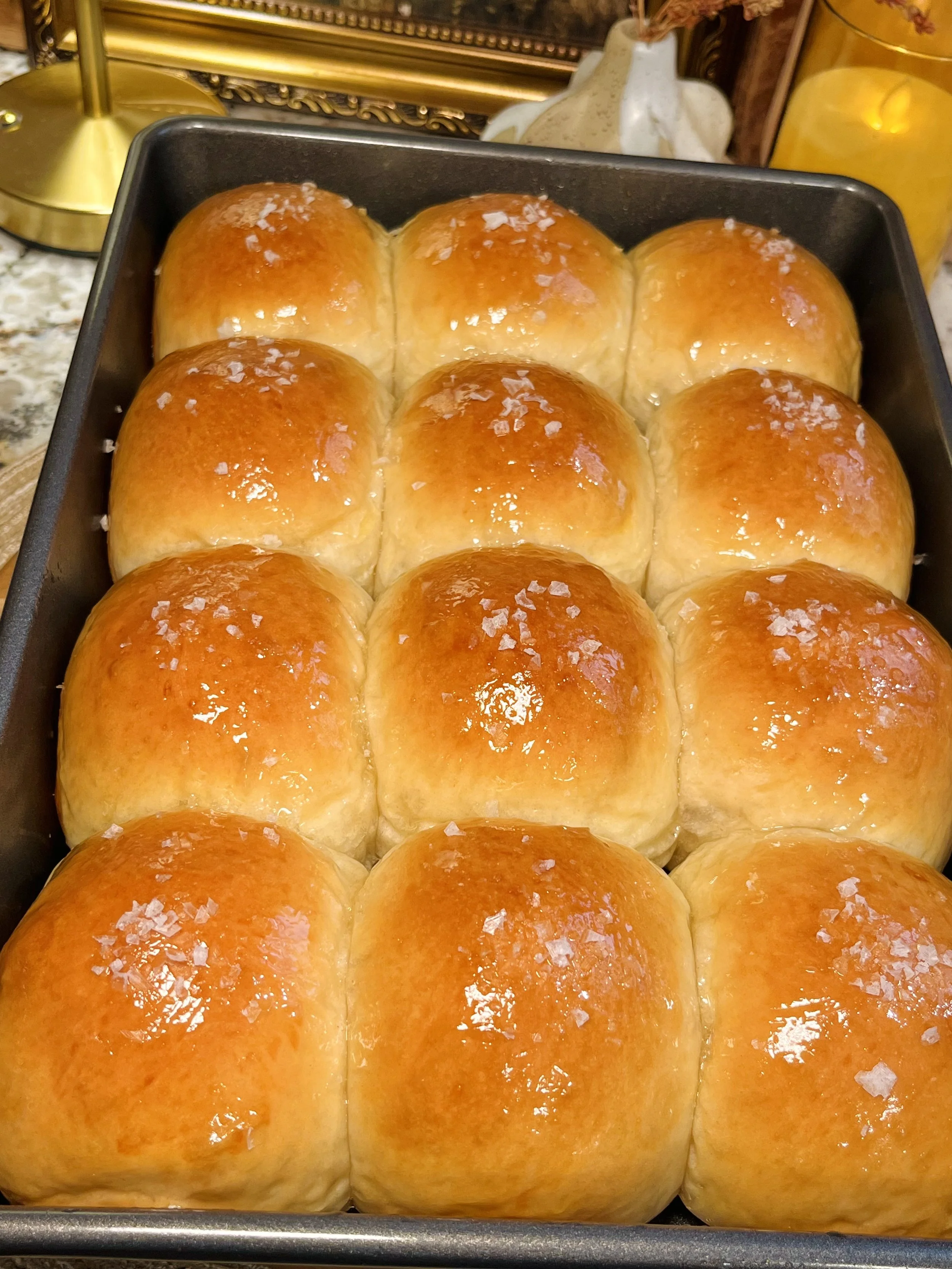Salted Honey Butter Dinner Rolls
If you thought dinner rolls couldn't get any better, prepare to have your mind (and taste buds) changed. We're taking the cloud-like texture of Japanese Milk Bread and giving it a golden, irresistible upgrade: Salted Honey Dinner Rolls.
These aren't just rolls; they're tiny, pillowy pockets of pure delight. They strike the perfect balance between sweet and savory, light and rich, making them the ultimate side dish for any meal.
The Secret Ingredient for Pillowy Soft Bread: An Introduction to Tangzhong
Do you dream of homemade bread that stays incredibly soft for days, with a light, feathery crumb that practically melts in your mouth? If your sandwich loaves tend to get dry and crumbly too quickly, it's time to unlock a game-changing secret from Asian baking: the Tangzhong method.
This simple, extra step is the key behind the famously soft texture of Japanese Milk Bread (Hokkaido Milk Bread) and other tender, fluffy baked goods. It’s a trick so effective, it feels like magic, but it’s pure, delicious science.
What Exactly is Tangzhong? (The Science Behind the Softness)
Tangzhong (pronounced tong-jong) is an Asian yeast bread technique, with origins in Japan. In its simplest form, it is a roux—a thick, pre-cooked slurry made from a small portion of a recipe's flour and liquid (usually water or milk).
Here’s the science of why this paste is so powerful:
Starch Gelatinization: When you heat the flour and liquid together to about 149∘F (65∘C), the starches in the flour gelatinize. This causes the starch granules to swell and absorb significantly more liquid—up to twice as much hot liquid as they would cold.
Water Trapping: By trapping the liquid within this viscous, gel-like paste, the dough can hold onto much more moisture. This is sometimes referred to as "stealth hydration," because you're adding more water to the bread without making the dough excessively sticky or difficult to handle.
The Result: That extra moisture doesn't evaporate during baking; it stays locked inside the crumb. More moisture equals:
A Softer, Lighter Crumb: The tenderizing effect of the higher hydration results in that signature pillowy texture.
Extended Shelf Life: Since the water is bound to the starch, it’s much more resistant to staling, which is caused by the starch molecules rearranging and releasing water. Your bread stays soft for days longer!
Salted Honey Butter Dinner Rolls
Makes 12 rolls
INGREDIENTS
Tangzhong
30 g all-purpose flour
125 g water (or do half water and half whole milk)
Dough
7g active dry yeast
165 g warm milk warmed to at least 110F
15 g granulated sugar
1 large egg
the entire cooled down Tangzhong mixture from above
430 g bread flour, plus more for kneading
15 g salt
60 g unsalted butter softened and cut into cubes
For the Egg Wash:
1 egg, whisked
1 tsp water
For the Honey Butter:
56 g unsalted butter
84 g honey
Flaky sea salt, for sprinkling
Method
To make the tangzhong, whisk the flour and water together in a small saucepan. Cook this mixture over medium-low heat, stirring constantly, until it turns thick like pudding.
Take it off the heat and let the tangzhong cool completely to room temperature before you use it.
To Make the dough, get your milk to a temperature of 108–110°F. (If it’s too hot, you'll kill the yeast!)
In a stand mixer bowl,combine the warm milk, yeast, and 2 teaspoons of the sugar. Let it sit for about 5–8 minutes. The mixture should become foamy and bubbly—that means your yeast is ready!
Add in the cooled tangzhong and the egg to the yeast mixture.
Then add in the flour, sugar, and salt to the bowl.
Use the dough hook attachment. Mix the ingredients until they all come together into a soft, sticky and shaggy dough. This should take about 10 minutes.
Add in the butter and mix until it is fully incorporated into the dough. Continue kneading the dough for another 10–15 minutes until it is completely smooth and elastic. It should pass the "windowpane test"—you can stretch a small piece very thin without it tearing.
Place the dough into a lightly oiled bowl and cover it with plastic wrap. Let it rise for about an hour, or until the dough has doubled in size.
Once doubled, gently punch the air out. Weigh the dough and divide it into 12 portions that are each 75 grams. Roll each piece into a smooth ball.
Place the 12 balls into your 9x16-inch baking pan. Cover the pan again and let the dough rise for another hour, or until the rolls have expanded and barely have any gaps between each roll.
Preheat your oven to 350°F.
Lightly brush the tops of the dough balls with egg wash.
Bake for about 25-30 minutes. The tops should be a deep golden-brown, and the loaf should sound hollow when you tap it.
While it’s hot, brush the top with your honey butter and sprinkle with flaky sea salt.


